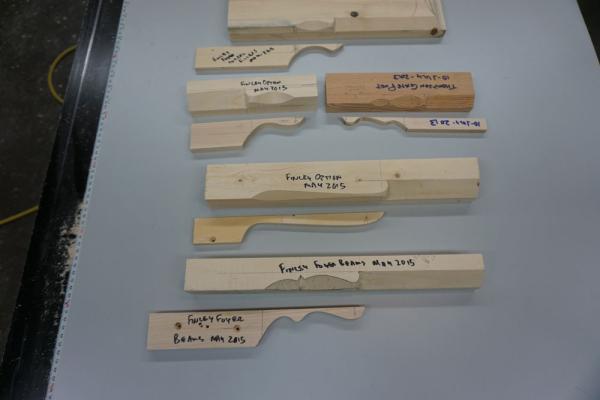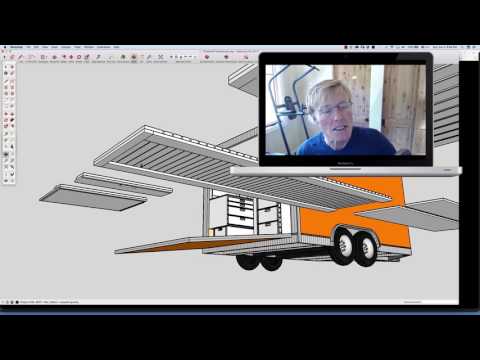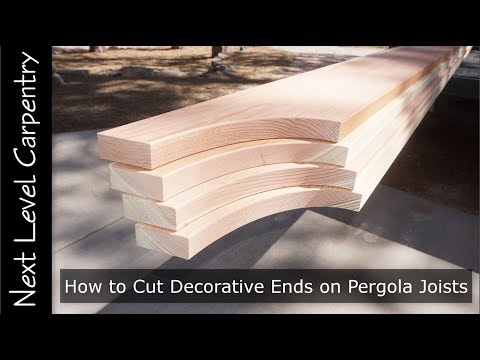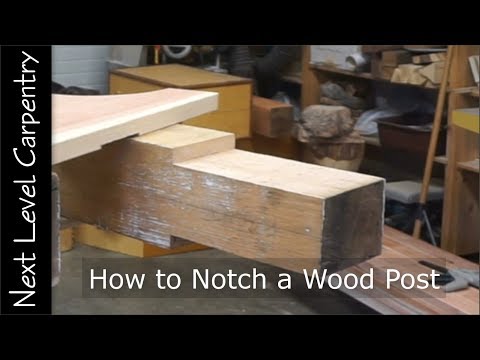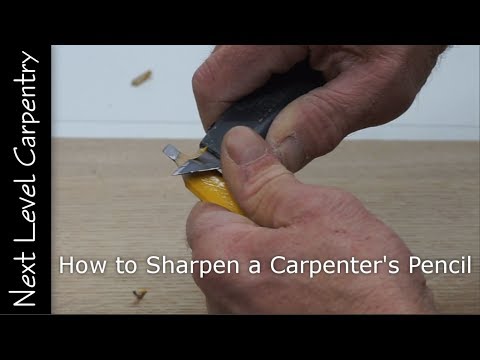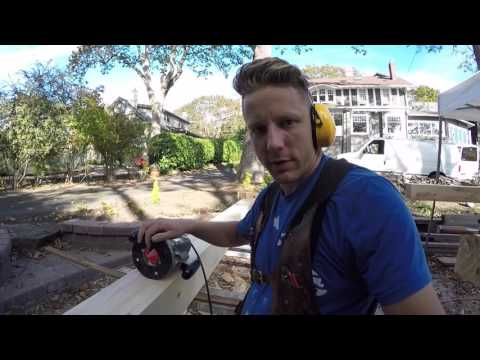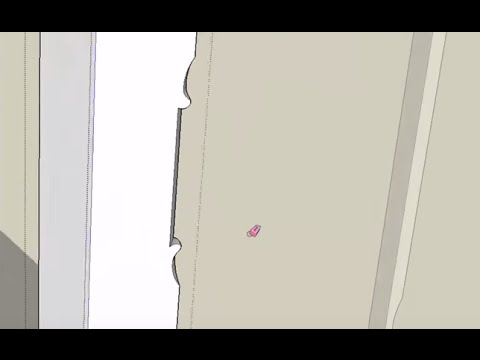OFFICIAL TRANSCRIPT:
I am making this video to illustrate how some simple jigs and a router can add interesting detail to millwork. Creating the jig takes a little bit of effort to plan, but once the fixture is made its very simple and works for repetitive carving of Millwork.
The fixture has an indexing block to position the lamb's tongue on the end of the beam. It is set to hold the router bit the right distance from the router plate to guide the bearing along the beam.
Once the jig is in position, it's just a matter of routing the edge. It's this case, the wood is hard maple. I'm making a very large pass with this 45 degree bevel, so I did a little climb-cutting to pre-mill the corner off so it didn't chip on the final pass.
Then, running the router the correct direction on the final pass will yield a smooth, virtually stain-ready surface.
This is the rough profile of the lamb's tongue and I'll use two other fixtures to notch it before I do the hand carving on the surface to add the final detail to the profile.
Another close-up of the routing fixture shows the contours that the bearing follows. And then the index block that I've glued on the end, sets it—in this case—17 inches from the end of the beam to the start of the leaf for the lamb's tongue.
Because I made the jig universal, I can use it for both sides of both ends of the beam.
The block indexes the fixture to the end of the beam. Again, I'll do some climb-cutting to remove some stock from this sharp corner of the hard maple so it doesn't chip off on the final pass.
With the preliminary routing done on these corners, I'll move on to the next step with a smaller router and another fixture to put a notch into the beam detail. The jig is positioned so that the center of this V is lined up with the center of the little hump.
I'll clean up these little inconsistencies with a piece of sandpaper and a round sanding block.
The next step is to clean up the bottom of the V-groove with a sharp chisel ... to get a crisp detail.
Next, I'll rout a small shoulder across the end of the cut. I want the shoulder to be 4-1/4 inches from the very top of the tongue, so I made a quick little gauge block to mark it. The block gives me a reference for setting up the router fixture. I'll mark the other side at the same time.
This is the fixture I have for routing the shoulder. It is just a V-ed block with a couple of guides to stabilize it. Looking close you can see the tip of a screw run through the pattern that protrudes just enough to stick in the wood—so the jig doesn't slide while using the router.
The router is set up with a flush trim bit and the distance from the plate to the bottom of the bit is about a thirty-second of an inch shy of the chamfer surface. It will leave a little bit of extra material to work with in the carving step.
Now with this shoulder router, I'm ready to do the next step to carve a roll on the end of the lamb's tongue.
I've got a combination square set up to continue the bevel mark and then I draw an approximate outline of the curve of the roll. Make an index mark, square to the edges, to line up my chisel.
Start the chisel bevel down to get the cut started, following that line, and then I flip it over so that the bevel is up. That gives a good curve for the start of this filing process.
As I said earlier, I try to keep the router bit from going below this surface so there's a little extra material to protect the chamfer during the filing process.
I've seen other lamb's tongues, and they stop with that shoulder coming square in to the chamfer. I like to put a little tuck under there, to give it a little more detail and make it look like more of a curve.
I start out with a triangle file and then take a few passes with a pointed laminate file.
Make a tight little roll.
All this time, I am making an effort not to damage the surface of the chamfer.
Because this is hard maple, I'm using these files, you could probably do it with sandpaper on other materials.
Now I'm just going to take a little bit off this extra material here. And then take the last little bit of scrape marks out with a scraper. And then that part is ready for sandpaper.
I let the sandpaper protrude a bit from the end of the block so it gets into that cove.
The rest of the beam will get more sanding before the stain, but because this is maple, it has to be pretty pristine. Otherwise any tooling marks will show up in the staining process.
The main reason I began this process with the router and measurements is to get these consistent. I've got to do sixteen of this pattern on the beams themselves, and on the crown filler piece there are another twenty, so I've got to do a total of thirty six of these, so I didn't carve them all by hand. If I was doing two or three or four, I would have just drawn them out and chiseled the whole works.
Because I have to do so many, I wanted to come up with a process to streamline and make them consistent.
